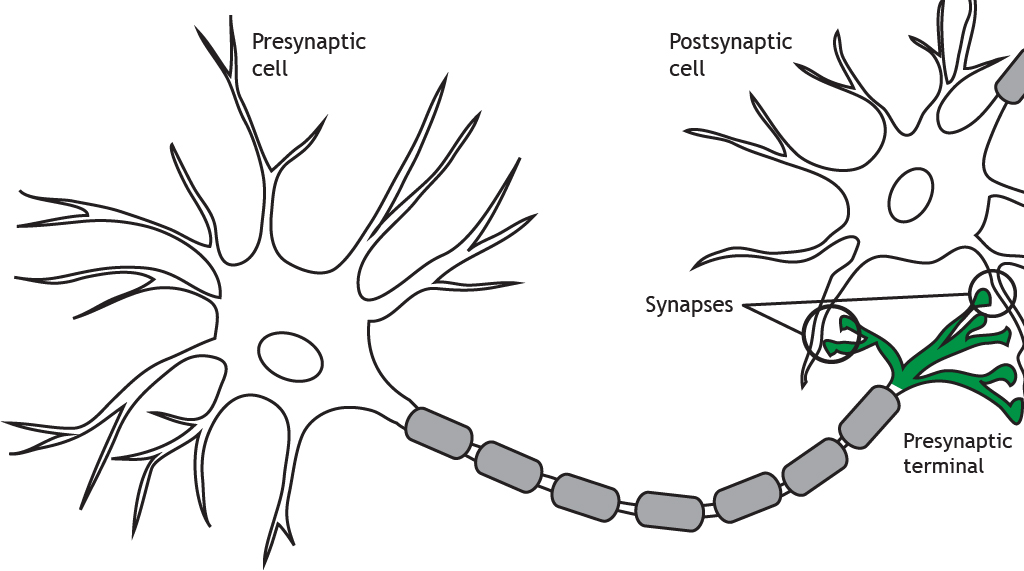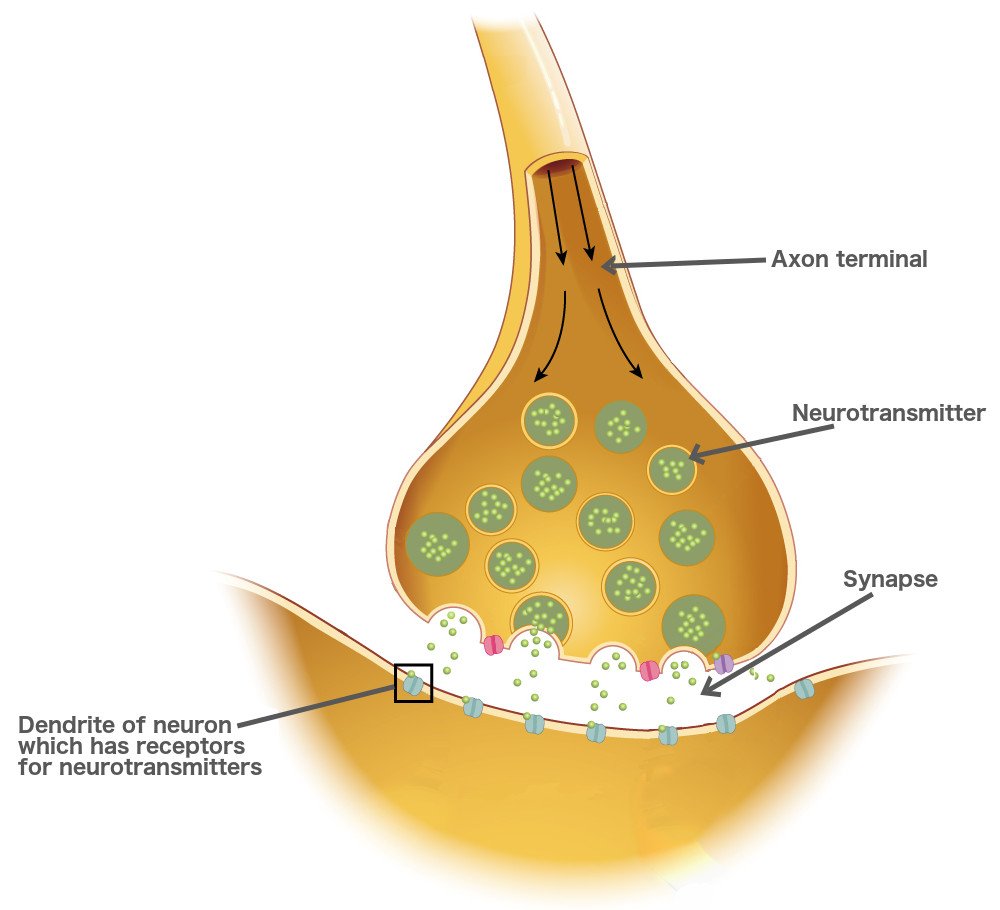Synapse Distribution: An Overview of Neural Network Connectivity
Synapse distribution is a fundamental aspect of understanding the organization and functionality of neural networks. It refers to the spatial arrangement of synapses, the junctions where neurons communicate with each other, along the length of axons and dendrites. This distribution significantly influences the efficiency, specificity, and computational capabilities of neural circuits. Various factors, such as neuron type, brain region, and species, contribute to the unique patterns of synapse distribution observed in different contexts.
The Role of Synapse Distribution in Brain Function
Synapse distribution plays a crucial role in brain function, significantly impacting information processing, learning, and memory. The spatial arrangement of synapses along neuronal processes influences the computational properties of neural circuits, determining their capacity to encode, store, and retrieve information. A well-organized synapse distribution enables efficient communication between neurons, ensuring the precise integration of signals required for complex cognitive processes.
Abnormal synapse distribution, on the other hand, can contribute to neurological disorders. For instance, alterations in synapse distribution have been implicated in Alzheimer’s disease, Parkinson’s disease, and autism spectrum disorder. In Alzheimer’s disease, synapse loss is a primary correlate of cognitive decline, while in Parkinson’s disease, abnormal synapse distribution in the striatum is associated with motor impairments. In autism spectrum disorder, atypical synapse distribution may underlie the disrupted connectivity observed in the brains of affected individuals.
Techniques for Mapping Synapse Distribution
Understanding synapse distribution requires the use of various techniques to visualize and analyze the spatial arrangement of synapses in neural networks. Three primary approaches include microscopy, electrophysiology, and genetic methods.
Microscopy: Light and electron microscopy are traditional techniques used to study synapse distribution. Light microscopy, such as confocal and two-photon microscopy, offers high-resolution imaging of labeled neurons and synapses, enabling the analysis of synapse distribution patterns in different brain regions. Electron microscopy, on the other hand, provides ultrastructural information about synapses, allowing for the identification of pre- and post-synaptic components. However, both techniques have limitations, such as time-consuming sample preparation and low throughput.
Electrophysiology: Electrophysiological methods, such as patch-clamp recordings, provide functional information about synapses by measuring the electrical activity of neurons. These techniques can reveal the strength and plasticity of synaptic connections, offering insights into the organization of neural networks. Nevertheless, electrophysiology is generally low-throughput and limited to the study of individual neurons or small neuronal populations.
Genetic Approaches: Genetic methods enable the manipulation of specific genes involved in synapse formation and maintenance, allowing researchers to investigate the impact of gene expression on synapse distribution. For example, optogenetics, a technique that combines genetic and optical methods, enables the remote control of genetically targeted neurons, providing a powerful tool for studying synapse distribution in vivo. However, genetic approaches require sophisticated molecular biology techniques and may not provide detailed information about synapse ultrastructure.
Comparative Analysis of Synapse Distribution Across Species
Comparative studies of synapse distribution across different species provide valuable insights into the evolution of neural systems and the development of animal behavior. By examining synapse distribution patterns in various species, researchers can identify both conserved and species-specific features of neural networks, shedding light on the functional organization of the brain.
For instance, comparative analyses have revealed that synapse distribution varies significantly between invertebrates and vertebrates. Invertebrate neural networks, such as those found in insects, often exhibit a more stereotyped and modular organization, with a higher proportion of synapses located on dendritic branches. In contrast, vertebrate neural networks, including those in mammals, display a more diverse and distributed synapse distribution, with a larger number of synapses located on the cell body and proximal dendrites.
Comparative studies also contribute to our understanding of human brain function. For example, by examining the synapse distribution patterns in non-human primates, researchers can infer the organization and connectivity of homologous brain regions in humans. This information is crucial for understanding the neural basis of human cognition and behavior, as well as for identifying potential targets for therapeutic intervention in neurological disorders.
The Impact of Experience and Learning on Synapse Distribution
Experience and learning significantly influence synapse distribution, shaping the organization and functionality of neural networks. Through activity-dependent plasticity, neural connections adapt to environmental demands, leading to the strengthening or weakening of specific synapses. This dynamic process enables the brain to optimize information processing, learning, and memory.
At the molecular and cellular levels, experience-dependent changes in synapse distribution involve complex interactions between neurotransmitters, receptors, and signaling molecules. For instance, the activation of N-methyl-D-aspartate (NMDA) receptors, a type of glutamate receptor, triggers a cascade of intracellular signaling events that ultimately result in the modulation of synaptic strength and distribution. Long-term potentiation (LTP) and long-term depression (LTD), two forms of synaptic plasticity, are key mechanisms underlying these experience-dependent changes.
Experience-dependent synapse distribution modifications have been implicated in various aspects of cognition and behavior. For example, in animal models of sensory deprivation, alterations in synapse distribution have been observed in the corresponding sensory cortices, reflecting the brain’s adaptability to environmental changes. Similarly, in humans, training-induced plasticity has been shown to modify synapse distribution in motor and visual cortices, suggesting that experience and learning can shape neural connections throughout life.
Synapse Distribution in Health and Disease
Abnormal synapse distribution is implicated in various neurological disorders, including Alzheimer’s disease, Parkinson’s disease, and autism spectrum disorder. Understanding the role of synapse distribution in these conditions is crucial for developing novel therapeutic strategies aimed at restoring neural network functionality.
In Alzheimer’s disease, a progressive neurodegenerative disorder characterized by memory loss and cognitive decline, synapse loss is a primary correlate of disease severity. The accumulation of amyloid-β plaques and tau protein tangles, two hallmark pathological features of Alzheimer’s disease, disrupts synaptic connections, leading to synapse loss and neurodegeneration. Targeting synapse distribution and promoting synaptogenesis, the formation of new synapses, is a promising avenue for Alzheimer’s disease therapy.
Parkinson’s disease, another neurodegenerative disorder, is associated with the loss of dopaminergic neurons in the substantia nigra pars compacta, a brain region involved in motor control. Abnormal synapse distribution in the striatum, a primary target of dopaminergic neurons, contributes to the motor impairments observed in Parkinson’s disease. Restoring synapse distribution and functionality in the striatum may help alleviate motor symptoms in affected individuals.
Autism spectrum disorder, a neurodevelopmental condition characterized by social communication deficits and restricted interests, is associated with atypical synapse distribution and connectivity in the brain. Altered synapse distribution in key brain regions, such as the prefrontal cortex and amygdala, may underlie the social and emotional processing impairments observed in autism spectrum disorder. Targeting synapse distribution and promoting synaptic plasticity is a potential strategy for treating this condition.
Emerging Technologies for Studying Synapse Distribution
Recent technological advancements have significantly facilitated the study of synapse distribution, providing new insights into the organization and function of neural networks. Super-resolution microscopy, optogenetics, and machine learning-based image analysis are three cutting-edge techniques that have revolutionized the field.
Super-resolution microscopy: Traditional light microscopy techniques are limited in their ability to visualize synapses at high resolution due to the diffraction limit of light. Super-resolution microscopy, however, overcomes this limitation by employing various strategies to obtain images with resolutions beyond the diffraction limit. Techniques such as stimulated emission depletion (STED) microscopy, structured illumination microscopy (SIM), and single-molecule localization microscopy (SMLM) enable the visualization of individual synapses and the quantification of synapse distribution with unprecedented precision.
Optogenetics: Optogenetics combines genetic and optical methods to enable the remote control of genetically targeted neurons. By expressing light-sensitive proteins, such as channelrhodopsins, in specific neuronal populations, researchers can selectively activate or inhibit these cells using light. Optogenetics provides a powerful tool for investigating the impact of neural activity on synapse distribution, allowing for the manipulation of neural networks in vivo.
Machine learning-based image analysis: The analysis of large-scale microscopy datasets can be time-consuming and prone to human error. Machine learning algorithms, however, can significantly expedite and improve the accuracy of synapse distribution quantification. By training models to recognize and classify synaptic structures based on their morphological and molecular features, researchers can efficiently analyze vast amounts of data, uncovering new insights into the organization and function of neural networks.
Future Directions in Synapse Distribution Research
The study of synapse distribution is a rapidly evolving field, with significant potential to transform our understanding of the brain and contribute to the development of new therapies for neurological disorders. Interdisciplinary collaboration and the development of novel experimental and computational approaches will be crucial for advancing synapse distribution research in the coming years.
One promising avenue for future research involves the integration of large-scale omics datasets, such as transcriptomics and proteomics, with synapse distribution data. By correlating gene and protein expression profiles with synapse distribution patterns, researchers can identify key molecular players involved in synapse formation, maintenance, and elimination. This knowledge can inform the development of targeted therapeutic strategies aimed at restoring normal synapse distribution in neurological disorders characterized by aberrant synapse distribution.
Additionally, the application of advanced computational models and machine learning algorithms to synapse distribution data can provide new insights into the organization and function of neural networks. By simulating the impact of experience, learning, and various neurological conditions on synapse distribution, researchers can elucidate the complex interplay between molecular, cellular, and systems-level processes that shape neural connectivity. These models can also serve as valuable tools for predicting the outcomes of therapeutic interventions aimed at modifying synapse distribution.
Lastly, the continued development and refinement of emerging technologies, such as super-resolution microscopy, optogenetics, and machine learning-based image analysis, will be essential for overcoming the current limitations of synapse distribution research. These tools enable the acquisition of high-resolution, high-throughput synapse distribution data, facilitating the investigation of previously inaccessible questions related to the organization and function of neural networks. By harnessing the power of these technologies, researchers can uncover new insights into the complexity of neural connections, paving the way for a deeper understanding of the brain and the development of novel therapies for neurological disorders.







